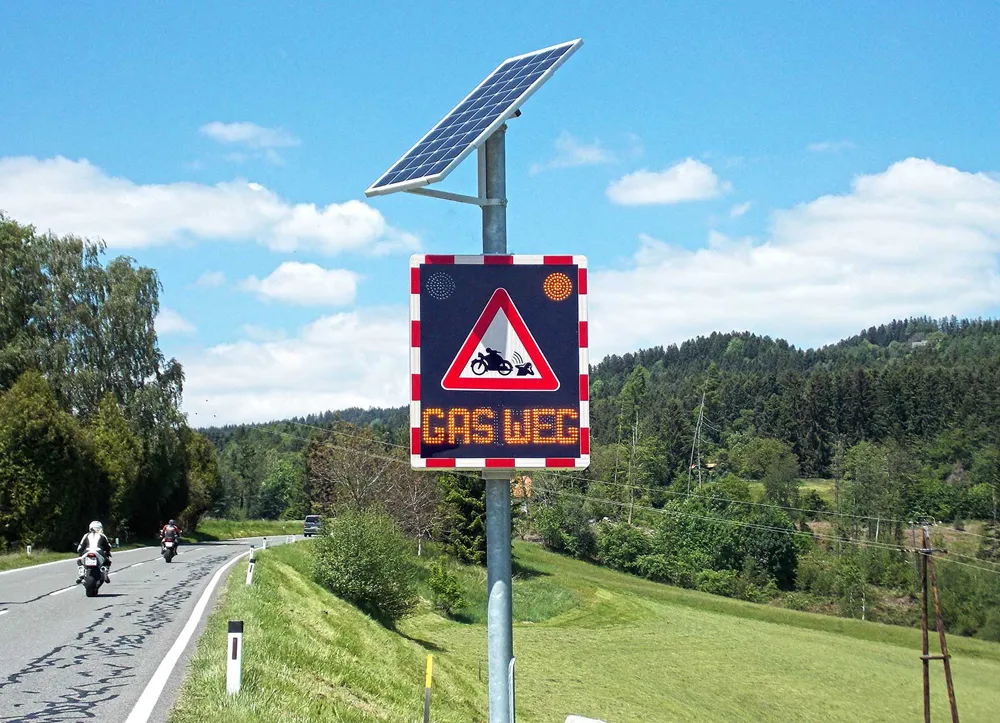A village in the UK county of Derbyshire is tackling the issue of speeding drivers by installing the latest Moveable Vehicle Activated Signs (MVAS) from SWARCO Traffic.
MVAS are ‘self-deployment’ signs that are designed specifically for parish councils to improve road safety and encourage safer driving speeds.
The latest generation of SWARCO’s “Your Speed Is” signs are lighter than previous models and feature improved battery life. The signs are portable, allowing them to be moved easily from post to
May 24, 2016
Read time: 2 mins

A village in the UK county of Derbyshire is tackling the issue of speeding drivers by installing the latest Moveable Vehicle Activated Signs (MVAS) from 337 SWARCO Traffic.
MVAS are ‘self-deployment’ signs that are designed specifically for parish councils to improve road safety and encourage safer driving speeds.
The latest generation of SWARCO’s “Your Speed Is” signs are lighter than previous models and feature improved battery life. The signs are portable, allowing them to be moved easily from post to post in different parts of the village.
SWARCO Traffic said the2309 Highways Agency-approved signs are simple to deploy, feature a bespoke LED optical system and are configurable for any speed limit. Captured data can be collected locally or remotely to allow analysis of vehicle speeds at the location.
SWARCO was approached by councillors from the village of Hulland Ward in an initiative supported by the county council and local employer Aggregate Industries. It followed a trial of two other systems last year.
Signs are installed at either end of the main road through the village, although there are three pairs of locations where the signs can be placed.
Parish Councillor and project leader David Lewis, said the object is to “improve the quality of life for people living in the village”.
County Councillor Irene Ratcliffe said she sees the deployment “as a pilot for other projects that could proceed in other areas”.
“The signs flash up the driver’s speed and either thank them for adhering to the limit or ask them to slow down,” said Derek Williamson, of SWARCO. “The signs are the result of more than 15 years development and are a simple and complete solution to an age-old problem that many rural communities face.”
MVAS are ‘self-deployment’ signs that are designed specifically for parish councils to improve road safety and encourage safer driving speeds.
The latest generation of SWARCO’s “Your Speed Is” signs are lighter than previous models and feature improved battery life. The signs are portable, allowing them to be moved easily from post to post in different parts of the village.
SWARCO Traffic said the
SWARCO was approached by councillors from the village of Hulland Ward in an initiative supported by the county council and local employer Aggregate Industries. It followed a trial of two other systems last year.
Signs are installed at either end of the main road through the village, although there are three pairs of locations where the signs can be placed.
Parish Councillor and project leader David Lewis, said the object is to “improve the quality of life for people living in the village”.
County Councillor Irene Ratcliffe said she sees the deployment “as a pilot for other projects that could proceed in other areas”.
“The signs flash up the driver’s speed and either thank them for adhering to the limit or ask them to slow down,” said Derek Williamson, of SWARCO. “The signs are the result of more than 15 years development and are a simple and complete solution to an age-old problem that many rural communities face.”






